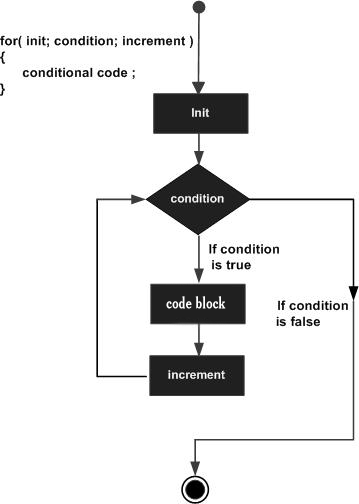Perl for loop
The Perl for loop is used to execute a sequence of statements multiple times, simplifying the code for managing loop variables.
Grammar
The syntax format looks like this:
for ( init; condition; increment ){
statement(s);
}
Here is the control process resolution for the loop:
- Init is executed first and only once. T his step allows you to declare and initialize any loop control variables. You can also write no statements here, as long as a sign appears.
- Next, you'll judge the condition. I f true, the loop body is executed. If false, the loop body is not executed, and the control flow jumps to the next statement immediately after the for loop.
- After executing the for loop body, the control flow jumps back to the increment statement above. T his statement allows you to update the loop control variable. The statement can be left blank as long as a sign appears after the condition.
- Conditions are judged again. I f true, the loop is executed, a process that repeats over and over again (the loop body, then increases the step value, and then re-determines the condition). When the condition changes to false, the for loop terminates.
Here, statement(s) can be a separate statement or a block of code consisting of several statements. Condition can be any expression that executes a loop when the condition is false.
When the condition is true, the program flow continues to execute the next statement immediately after the loop.
Flow chart

Instance
#!/usr/bin/perl
# 执行 for 循环
for( $a = 0; $a < 10; $a = $a + 1 ){
print "a 的值为: $a\n";
}
The above procedure is performed and the output is:
a 的值为: 0 a 的值为: 1 a 的值为: 2 a 的值为: 3 a 的值为: 4 a 的值为: 5 a 的值为: 6 a 的值为: 7 a 的值为: 8 a 的值为: 9
 Perl loop
Perl loop